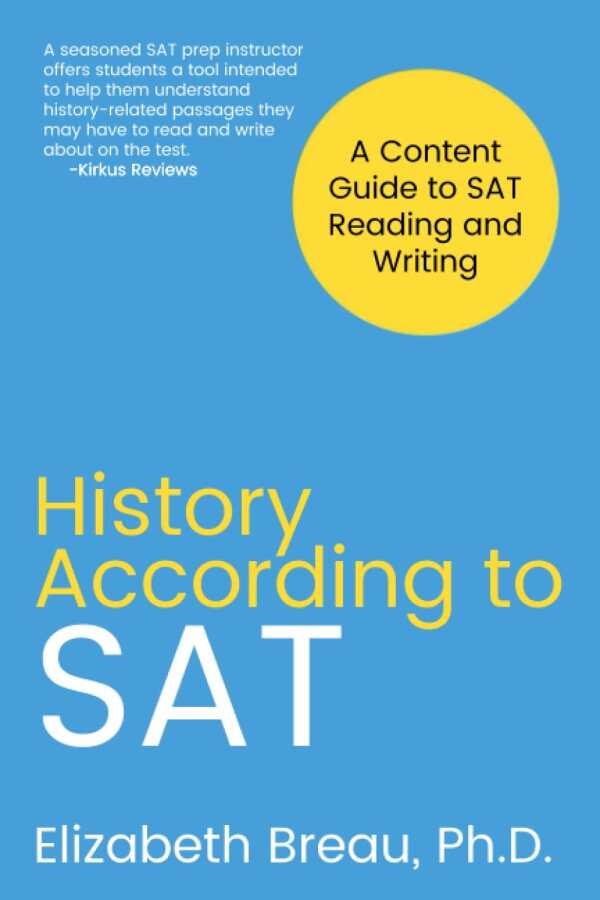History According to SAT
A Content Guide to SAT Reading and Writing
Elizabeth Breau’s historically astute text connects events in Europe’s and the US’s past to make them more understandable for students doing test preparation.
Elizabeth Breau’s educational guide History According to SAT shares the historical context for standardized test questions.
Students with high reading comprehension often struggle on the SAT reading and writing tests due to a lack of knowledge about historical context, says Breau. In order to fill in that gap, this book discusses the influence of European and American political movements on the US’s progression. Separated into time periods like the Middle Ages, the American Revolution, and World War II, the book shares historical documents and information in outline form, hoping to explain the construction of modern democracy in the US. Avoiding judgment in order to prepare students for the test, these treatments are variously broad and specific, covering both controversies and relevant historical events. Further, the book explains the terms it uses well for clarity.
Industrialization and war are major themes: the book recalls moments in which citizens rose against oppressive regimes and protested for workers’ rights and racial and sexual equality; it covers movements to empower people alongside arguments for capitalist and democratic systems. Sections on conflicts such as the Cold War period include poignant questions about whether another revolution in the United States would ever be possible; these are juxtaposed to the explanations behind the US’s proxy wars in the Middle East.
The through lines of democracy are addressed, from periods of Catholic dominance into contemporary civil rights movements. So too are feminist and antiracist figures covered, with examples of the texts they wrote, as with W. E. B. Du Bois and The Souls of Black Folk. Indeed, the book’s coverage is broad and selective, pulling forward facts it deems significant to the formation of the United States: it covers the the Magna Carta, for example, in the context of its ties to the Declaration of Independence, the US Constitution, and the Bill of Rights. To solidify these connections for the audience, it also streamlines historical information in terms of key movements, people, technologies, and documents, all recounted in succinct detail. It proffers some fascinating information, too, as with its coverage of the European “discovery” of Greek and Roman texts and about the ancient wealth of knowledge preserved by the Ottoman Empire for centuries.
However, some of the book’s statements—as with the declaration that the expulsion of Jews and Muslims from Catholic Spain was the onset of race-based slavery—are shared without sufficient support. Further, the book’s analyses of issues like censorship during the HIV/AIDS crisis are too vague. Though the book lists some sources at its end, the lack of in-text citations leads to dropped connections and lingering questions. More helpful are its included images of paintings, maps, diagrams, and political cartoons, which complement the book’s recounting of battles, artwork, and technological and scientific movements across time.
History According to SAT is an informative guide to basic Euro-American history, supplying Americans with bare contexts to prepare for national standardized testing and higher education.
Reviewed by
Ali Ortiz
Disclosure: This article is not an endorsement, but a review. The publisher of this book provided free copies of the book and paid a small fee to have their book reviewed by a professional reviewer. Foreword Reviews and Clarion Reviews make no guarantee that the publisher will receive a positive review. Foreword Magazine, Inc. is disclosing this in accordance with the Federal Trade Commission’s 16 CFR, Part 255.

